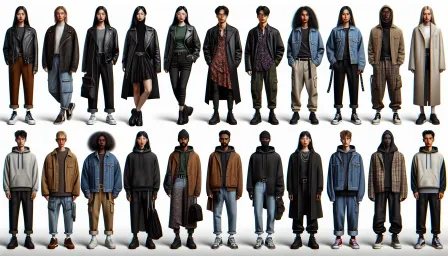Fashion Industry Challenges: Overcoming Modern Obstacles in 2024

Discover the major challenges facing the fashion industry in 2024 and find out how businesses can overcome these obstacles to thrive in a competitive market.
The fashion industry is a dynamic landscape characterized by rapid changes, innovative designs, and an insatiable consumer appetite for the new and the next. However, along with the allure of glamour and innovation, the industry faces a myriad of challenges that threaten its stability and growth in 2024. This article delves into the primary fashion industry challenges and offers insights into how businesses can navigate these hurdles effectively.
Environmental Sustainability
One of the most pressing issues in the fashion industry today is environmental sustainability. The sector is notorious for its significant carbon footprint, extensive water usage, and textile waste. In 2024, consumers and regulatory bodies are increasingly demanding that brands adopt more sustainable practices.
Adopting Eco-friendly Materials
Brands are exploring the use of eco-friendly materials such as organic cotton, recycled fibers, and biodegradable textiles. By investing in sustainable materials, companies not only reduce their environmental impact but also cater to a growing segment of eco-conscious consumers.
Supply Chain Disruptions
The COVID-19 pandemic highlighted the vulnerabilities in global supply chains, a challenge that continues to affect the fashion industry into 2024. Disruptions ranging from raw material shortages to shipping delays have forced brands to rethink their supply chain strategies.
Localizing Supply Chain Operations
To mitigate risks, fashion companies are increasingly localizing their supply chains. This approach can reduce dependency on international suppliers, shorten lead times, and improve overall supply chain resilience.
Embracing Technology
Technological advancements, such as blockchain and AI, are being used to enhance supply chain transparency and efficiency. These technologies help companies track their products from production to retail, ensuring compliance with sustainability standards and improving inventory management.
Consumer Expectations and Trends
In 2024, consumer expectations are evolving at a rapid pace. Today's buyers look for personalized experiences, ethical practices, and instant gratification. Meeting these demands requires a strategic approach to customer engagement.
Personalization and Customization
Utilizing data analytics and AI, fashion brands can offer personalized recommendations and customization options, creating a unique shopping experience that encourages consumer loyalty.
Transparency and Ethical Practices
Transparency in sourcing, manufacturing, and labor practices is becoming a critical factor for consumers. Brands that openly communicate their ethical practices and uphold high standards in these areas are more likely to retain consumer trust and loyalty.
Technological Integration
The integration of technology in fashion is no longer optional but imperative. From virtual fitting rooms to AI-driven design, technology is revolutionizing how brands interact with consumers and streamline operations.
Virtual and Augmented Reality
Virtual and augmented reality offer immersive shopping experiences, allowing customers to virtually try on clothes before making a purchase. This technology enhances online shopping experiences and reduces return rates.
AI in Design and Production
Artificial intelligence is being used to predict trends, optimize designs, and manage inventory. AI can also streamline production processes, reducing waste and improving efficiency.
Economic Uncertainty
Global economic uncertainties, including fluctuating currencies and trade tensions, pose significant challenges for the fashion industry. Economic instability affects consumer spending power and necessitates agile financial strategies from brands.
Flexible Pricing Strategies
Brands are adopting flexible pricing strategies to navigate economic instability. Dynamic pricing, sales, and discounts can help maintain consumer interest and drive sales during economically turbulent times.
Diversifying Markets
Expanding into diverse markets can mitigate the risks associated with economic downturns in specific regions. By tapping into emerging markets, brands can secure new revenue streams and enhance business stability.
Conclusion
The fashion industry in 2024 is navigating a complex array of challenges, from sustainability and supply chain disruptions to evolving consumer expectations and economic uncertainties. However, by embracing innovative solutions, leveraging technology, and prioritizing transparency and ethical practices, fashion brands can overcome these obstacles and thrive in a competitive market.
As the industry continues to evolve, staying informed about emerging trends and challenges is crucial for success. By remaining adaptable and committed to continuous improvement, fashion businesses can build a resilient, future-proof foundation.



























